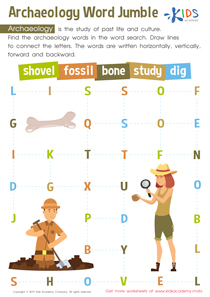Extra Challenge Connecting the Dots worksheets activities for Ages 7-8
2 filtered results
-
From - To


Undersea: Dot To Dot Worksheet


Robot Maze Worksheet
Extra Challenge Connecting the Dots worksheets activities stand out as an invaluable tool for enhancing educational experiences for students at various levels. These engaging activities are crafted not only to entertain but also to elevate critical thinking, fine motor skills, and the ability to recognize and follow patterns – all essential components for academic and personal growth.
First and foremost, Extra Challenge Connecting the Dots worksheets activities serve to bolster students' problem-solving skills. As children and young adults work their way through these puzzles, they are required to think several steps ahead, foreseeing the outcome of connecting one dot to the next. This forward-thinking approach is fundamental in developing strategic thinking skills, which are applicable across a range of subjects and real-world scenarios.
Moreover, these worksheets are an excellent means of improving fine motor skills. The precise nature of connecting dots requires control and dexterity, making these activities particularly beneficial for younger students who are still mastering the art of writing and drawing. As they navigate from one dot to the next, students refine their hand-eye coordination, laying a strong foundation for handwriting and other manual tasks.
Another significant advantage of Extra Challenge Connecting the Dots worksheets activities is their role in teaching pattern recognition. The ability to identify and predict patterns is a critical component of mathematical reasoning, reading comprehension, and even scientific inquiry. By engaging with these worksheets, students enhance their ability to discern patterns, a skill that translates into improved academic performance and problem-solving abilities.
Furthermore, the extra challenge aspect of these worksheets ensures that students are not merely going through the motions but are genuinely engaged and pushed to expand their limits. This element of challenge keeps the activities exciting and ensures that students of all skill levels can find worksheets that match their abilities while still offering room for growth.
In conclusion, Extra Challenge Connecting the Dots worksheets activities are a multifaceted educational tool. By incorporating these activities into the learning process, educators can provide students with a fun, engaging way to develop critical thinking, fine motor skills, and pattern recognition capabilities. These worksheets not only support academic achievement but also encourage a lifelong love for learning.
 Assign to the classroom
Assign to the classroom












